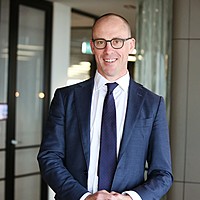Time to get sticky

Centuria Healthcare
Over the past seven months, COVID has tested the strengths of the relationship between the tenant and the landlord. Tenants would like to improve their business economics through lower rent (or a rent holiday), which is diametrically opposed to the desires of landlords.
Healthcare operators felt the effects of restricted access for elective surgery and pathology testing, but most operators are either back at full capacity (with some at over capacity). In healthcare real estate, the effort and thinking around the needs of the tenant are vital in ensuring the tenant remains sticky and stays beyond the first generation of its lease. One of the central themes within the sector is to partner with healthcare operators and to assist them in the growth of their business, nationally.
In delivering this strategy, there are a few tangible qualities, which illustrate this point. The best indication of how landlords – or fund managers – relate to these clients is the element of ‘stickiness’ – that is, how likely clients are to ‘stick with’ their property. Here are my top indictors of stickiness.
1. Fit-for-purpose properties
Healthcare properties are built specifically for the intended client. Fit-for-purpose properties are more common in industrial and healthcare sectors as specialised equipment forms the basis of the property. For example, GenesisCare is a radiation and oncology specialist which has cancer-treating equipment (such as a MR Linear Accelerator), which cost approximately $15m each. The equipment often needs to be located in subterranean spaces – bunkers – surrounded by very thick lead-encased walls (to ensure radiation is contained) which adds to the cost of the project. Naturally, a building has to be purposely built for this type of equipment. As a result, GenesisCare typically leases buildings on 15-year terms and would often remain for an additional period of time following the expiry of the first generation of the lease.
2. Surrounding demographics
Understanding the fit between the healthcare service delivered by the key operators and the economic demographics surrounding the property is important in thinking through the sustainability of the client’s business models. For example, a location with a large proportion of seniors (those above the age of 75 years) is likely to be attracted to hospital operators with orthopaedics surgical services (for example, hip replacements). Equally, a neighbourhood comprising mostly young families would benefit from paediatrics, obstetrician, GPs and dentists. It is important for the landlord to understand the depth and breadth of this demand, and to ensure the right healthcare operators are located in the right community.
3. Surrounding, complementary businesses
The trend for the past few years with medical centres is to think through referral networks. Often, these networks can be located within the same building (creating an efficient ecosystem or a one-stop-shop for medical needs). For example, a family would be more likely to attend a centre that has a GP, pathologist, chemist, dentist, physiotherapist, psychologist, optometrist and the like, all under one roof, rather than travelling across several suburbs to satisfy their medical needs. Each of these clients are likely to stay within the same building if their neighbours are attracting strong demand.
4. Partnerships – vertical alignment
When we evaluate alignment, we focus on the different stakeholder groups involved in that building to ensure they’re all aligned. For example, Centuria Healthcare’s newly acquired hospital in Orange is a great example of alignment. It is an integrated surgical hospital and medical building located adjacent to the public base hospital. The building has specialist doctors which not only own a share of the hospital business, but also the property. Additionally, the hospital group invested approximately $14m into its fit out and its doctors work with the public hospital to help reduce patient wait times. The patient, private and public hospital operators and the surgeons are all aligned, thereby improving the stickiness of our clients in this building.
As economic uncertainty grows in Australia, investors will increasingly be attracted to investment underpinned by non-discretionary demand, highly specialised fit outs, referral networks and long-term partnerships with key operators. These qualities should drive strong (and growing) income for investors.
Not already a Livewire member?
Sign up today to get free access to investment ideas and strategies from Australia’s leading investors.
3 topics
1 stock mentioned

For more than two decades, Andrew has worked across investment markets including Australian and US equity derivatives, fixed-term interest markets and commercial real estate sectors, the latter focused on healthcare property. His investment...
Expertise

For more than two decades, Andrew has worked across investment markets including Australian and US equity derivatives, fixed-term interest markets and commercial real estate sectors, the latter focused on healthcare property. His investment...
